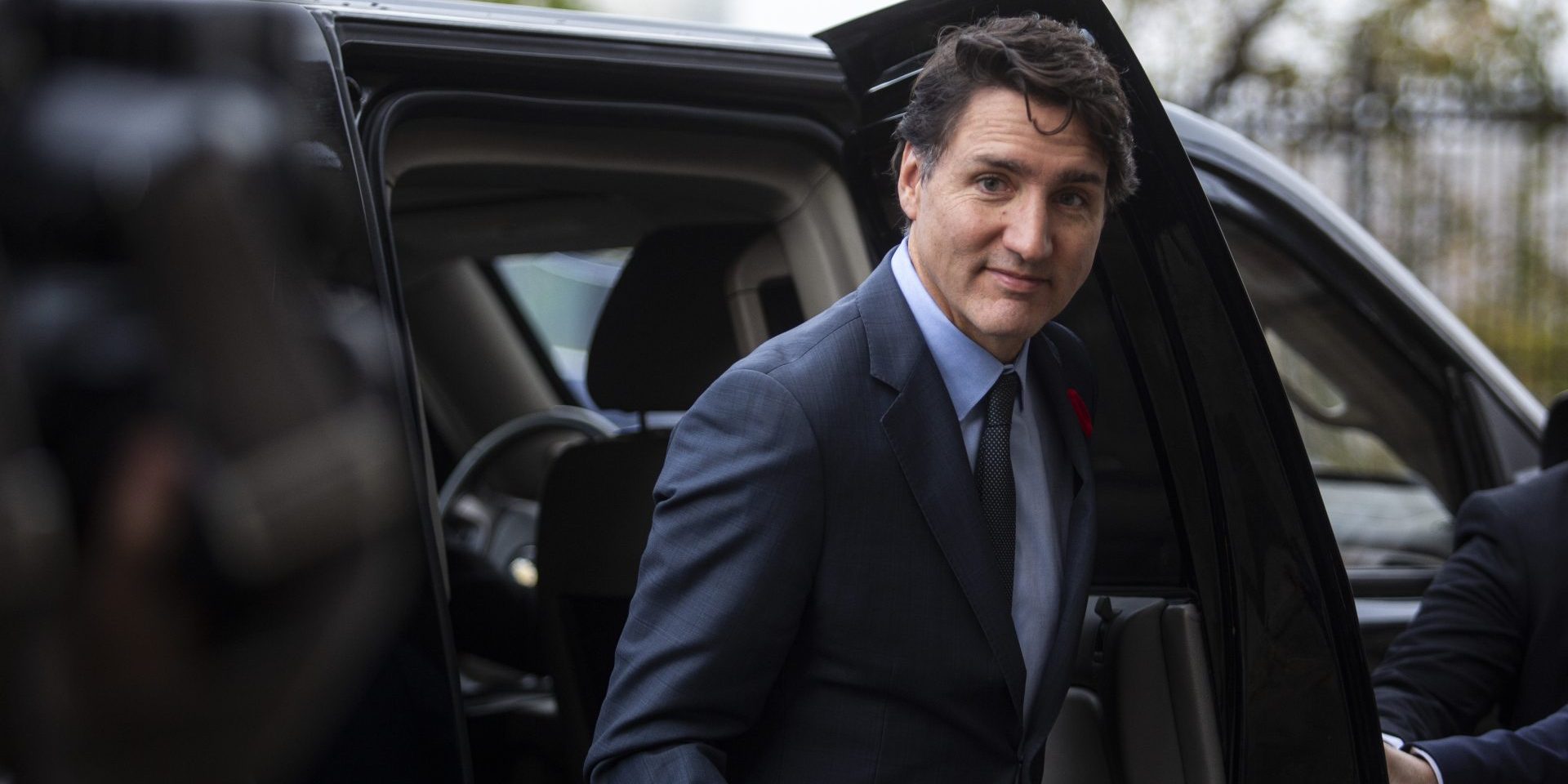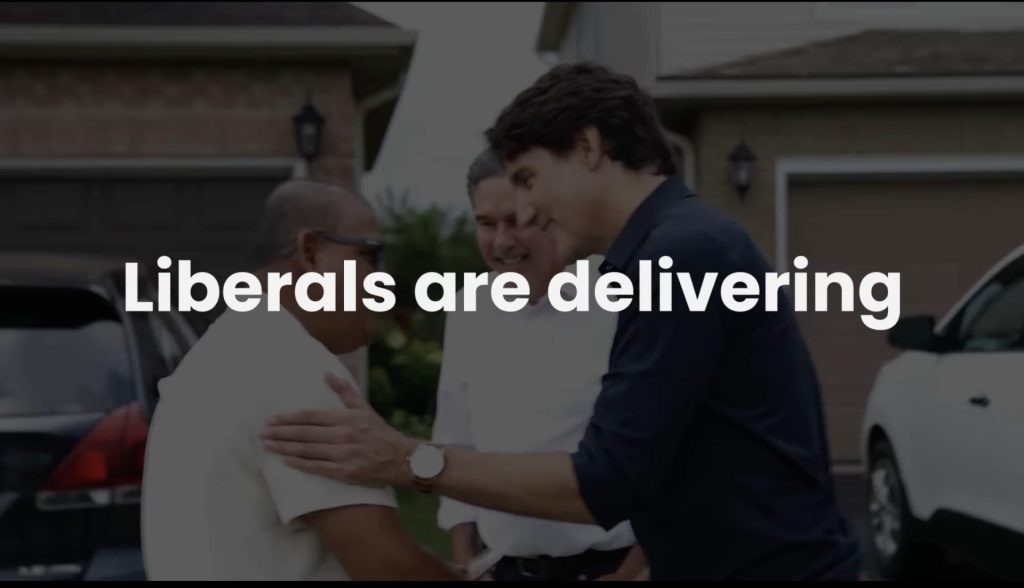Grits’ ad-buy boost briefly overtakes Tories, but strategists say ‘spray-and-pray’ tactics will need recalibrating

The Liberal Party accelerated its digital ad buys last month, catching up and overtaking its Conservative rivals. Yet, with a vastly smaller war chest to fuel its digital messaging machine, political communications strategists say it will be difficult for the Grits to maintain their current momentum or refine their targeting beyond a nationwide “spray-and-pray” strategy.
For the first time since The Hill Times began tracking the federal parties’ digital advertising purchases this past summer, the Liberals spent a higher combined total on the party’s and Prime Minister Justin Trudeau’s (Papineau Que.) official Facebook and Instagram pages between Nov. 18 and Nov. 24—the last full week with updated data—compared to the total spent on the official pages of Conservative Leader Pierre Poilievre (Carleton, Ont.) and the party.
According to Meta’s Ad Library, the only publicly available data on federal parties’ current advertising spend, the Liberals spent $75,376 between the two pages, compared to the $58,237 spent between the two Conservative accounts. The previous week, Nov. 11-17, the Liberals were also shy of the Conservatives’ combined total, with $57,216 and $58,819 respectively.
While those totals amount to a slight dip from the combined $66,704 the Conservatives spent from Oct. 28 to Nov. 3, the Liberals’ total is a significant jump from the combined $11,873 it spent during the same period.
The Liberals' increased spending in the final two weeks of November also significantly reduced the gulf between their monthly total expenditures and those of the Conservatives.
Between Oct. 31 and Nov. 29, the Liberals spent a combined $195,308 on Meta, compared to the Conservatives' $252,023, a difference of just over $56,700. That difference is roughly one-sixth of the $383,360 margin between the Liberals’ and Conservatives’ October totals when the parties spent a combined $15,235 and $398,595, respectively.
GT&Co principal Cole Hogan, who has been tracking the parties’ digital ad spends since the beginning of June, said the Liberals' uptick in spending is the largest he has recorded. However, the two-week period represents a small fraction of what the Conservatives have consistently spent each month, which is anywhere from a quarter-million to one-third of a million dollars.
For the first time since I've started tracking @JustinTrudeau's @liberal_party is spending on par with @PierrePoilievre's @CPC_HQ.
— Cole Hogan (@colewhogan) November 27, 2024
How long can Trudeau's Liberals advertise at this rate of spending?#cdnpoli pic.twitter.com/xIQy8rL7Bk
However, Hogan, who has worked on digital ad campaigns for Ontario Premier Doug Ford and former Alberta premier Jason Kenney, said the level of spending and the number of ads being produced for the platform would suffice for what he believes is the actual intended audience: the Liberal caucus and potential donors.

“This is a signal to caucus that ‘we’re still alive and with some fight in us,’” Hogan explained, adding that the more substantial ad-spend combined with the recently passed GST holiday and proposed $250 Working Canadians benefit should continue to quell further “grumblings from caucus.”
“The party itself and the PMO can now point to what they are actually doing to try and take the fight to Poilievre,” Hogan said. “This looks a lot more promising for them than anything else has in the last little while.”
While Hogan said there would be “quibbles about the policy,” he added that running ads on the rebate and scrapping the GST was at least a departure from the Liberals’ usual “boilerplate message” highlighting previous accomplishments.
However, Hogan noted that it remains to be seen how long the Liberals will be able to maintain even a comparable level of spending to the Conservatives, particularly as the latter’s fundraising war chest allows them to commit similar or proportionate levels of resources to every front of the commercial conflict.

In the first three quarters of 2024, the Conservatives have already raised $28.97-million compared to the $10.1-million raised by the Liberals in the same period. In third place, the New Democrats had a three-quarter total of $3.9-million.
While the Liberals attempt to keep pace with the Conservatives’ spending, the New Democrats have only just begun to get moving again after a month-long pause.
According to Meta’s Ad Library, NDP Leader Jagmeet Singh (Burnaby South, B.C.) and his party’s official accounts spent $0 on advertising in October. They began spending again on Nov. 4, expensing $2,573 over seven days. The NDP spent $5,792 on Meta ads last month, though the entirety of that spend was from the party’s page. Singh’s official page has not purchased an ad since the end of September.

Michael Roy, the NDP’s former national digital director during the 2015 federal election, told The Hill Times that the federal party has a tradition of pausing its national fundraising and advertising campaigns during provincial elections. The British Columbia election wrapped up on Oct. 19, New Brunswick on Oct. 21, Saskatchewan on Oct. 28, and Nova Scotia voters went to the polls on Nov. 26.
However, Roy described the NDP’s current level of spending as a “nominal amount” to maintain its usual level of donor engagement and email acquisitions to support fundraising initiatives.
“Realistically, that’s about all you can expect,” Roy said, noting that the NDP is in the weakest financial position of the three main federal parties.
As far as priming the electorate to the issues the NDP will be looking to run on in the next election, Roy said the current level of spending is “effectively meaningless.” Still, it will allow the party to build out the infrastructure and communications expertise its team will need.
“It’s effectively just getting the machine warmed up,” Roy said.
The difference between the Liberals’ and Conservatives’ fundraising totals may already be straining the pace of the Grits' accelerated spending. From Nov. 23-29, the Liberals' spending has already dipped back down to $46,192, while the Conservatives’ total has held steady at $56,900.
Hogan said he has observed another significant difference between the Liberals’ and Conservatives’ current ad-buy strategy in addition to the longevity of their spending: where and to whom their respective ads are targeted.
Until recently, the Conservatives had been targeting their digital ads by focusing on specific postal codes, whereas the Liberals had been employing a “spray-and-pray” strategy, Hogan said, noting that the majority of the Grits' spending was nationally focused, with the majority of the spending in Ontario, B.C., Quebec, and Alberta—in that descending order.
However, as of the last week of November, Hogan said the Liberals have begun targeting some of their ads to exclude users from postal codes within the riding of Cloverdale–Langley, B.C., ahead of the upcoming Dec. 16 byelection. Instead, those users will primarily see only those ads the Liberals have produced focused on their candidate, Madison Fleischer.
Hunter Knifton, Liberal MP Nate Erskine-Smith’s (Beaches–East York, Ont.) deputy director of communications and data during his 2023 Ontario Liberal leadership campaign, said that even a momentary boost in fundraising is an “encouraging sign of life” for the federal Liberals.

“They’re pretty late to the party, but upping the spend is obviously a good thing,” Knifton said, noting that the majority of the digital ads the Liberals have created since the end of October have focused on “bread-and-butter issues” like housing, health care, childcare, and more recently, the GST holiday and tax rebate.
However, Knifton, now a consultant and data scientist with Crestview Strategy, said the lack of geographic targeting is concerning. With a limited fundraising budget compared to the Conservatives, he said the Liberals may be using these initial ads to test future, more-expansive messaging campaigns.
“These ads will certainly be a test to see which messages work best with which group,” Knifton said. “Once they combine that polling, they will hopefully get a little bit more targeted with the arguments they're making to key voter groups as we get closer to an election.”
As for how long the Liberals can maintain the current level of spending, Knifton said the party has a “chicken-or-the-egg” problem.
“It‘s easier to fundraise if you are doing better in the polls, and to do better in the polls, you probably need to advertise, which costs money,” Knifton said. He added that, either way, there’s no point in sitting on the money the party does have and hoping it will spontaneously turn into a chicken.

“It’s the smart play to try to build some momentum now to get up in the polls so you can fundraise from that to fund a really aggressive ad campaign closer to the election,” Knifton said, adding that in the meantime, there are some strategies the Liberals can afford to borrow from the Conservatives.
“The Conservatives' top-performing ads are all some sort of voter ID,” Knifton said, noting that the highest-performing ad was an appeal for supporters to pre-order lawn signs.
“I think it would be smart for the Liberals to try to be a little bit more tactical in getting ready for the campaign,” Knifton said.
The Hill Times






 LICENSING
LICENSING PODCAST
PODCAST ALERTS
ALERTS













